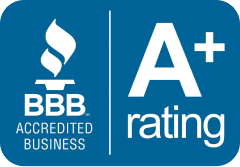Does Medicare Cover Vision And Glasses?
Part B (medical insurance) of Original Medicare helps cover certain vision-related services in the event of eye disease or injury, but it does not cover routine vision exams or glasses.
As an alternative to Original Medicare, Medicare Advantage (MA) Plans offer benefits similar to Part B and sometimes even more comprehensive coverage. Common vision care needs like annual checkups and corrective glasses are typically partially covered by MA plans.
Coverage for vision care under Part B is restricted to procedures deemed medically necessary. Some of the Part B-covered eye conditions may be simply an inevitable consequence of getting older. Medicare Advantage plans cover everything that Original Medicare does, and then some. This includes preventative care like annual eye exams and allowances for corrective lenses, which Original Medicare doesn’t pay for.
What Vision Care Is Covered By Medicare?
These vision-related services are considered medically necessary, and Medicare Part B helps pay for them:
- Cataract surgery, whether performed with a laser or more conventional methods. To correct your vision, your cloudy natural lens will be surgically removed and replaced with an intraocular lens (“inside the eye”).
- One pair of prescription glasses in a standard frame or one box of contact lenses from a Medicare-approved vendor if you’ve had cataract surgery.
- If you are at risk for glaucoma, which is caused by increased pressure inside the eyeball and gradually destroys vision, you should get a screening exam once a year. Several things can increase your chances of developing glaucoma:
- Diabetes
- A family history of glaucoma
- If you are African American and aged 50 or older
- If you are Hispanic and aged 65 or older
- If you have diabetes, you should have an eye exam once a year to check for diabetic retinopathy. Diseases of the retina, the layer at the back of the eye that works with the optic nerve to form an image, are known as retinopathies. An eye doctor licensed to practice in your state is required to perform this examination. Medication, laser therapy, and surgical procedures are just some of the options for treatment.
- Age-related macular degeneration (AMD) patients may be eligible for coverage under Part B for certain eye exams, medications, and procedures. Deterioration of the macula, the retina’s central macula, is the leading cause of blindness. Medication, laser surgery, and corrective lenses are all potential treatment options.
Medically necessary eye exams and corrective lenses are covered by the Medicare Advantage plan to the same extent as they are by Medicare Part B.
Which Medicare Plans Are Best If You Need Vision Care?
If you have Medicare and require vision care, you should enroll in a Medicare Advantage Plan. The MA plans pay for everything that Original Medicare Part B does, and more, including routine eye exams and corrective lenses.
In 2022, nearly all Medicare Advantage plans (98%) and Special Needs Plans (96%) in the United States will include vision coverage, as reported by the Kaiser Family Foundation. Most insurance plans require you to see doctors and hospitals that are part of their network and may even require referrals or pre-approval before you can see them.
The Evidence of Coverage (EOC) or Summary of Benefits for each plan will detail the types of vision care covered and any associated costs. For a higher premium, some plans include vision coverage for the whole family.
To give you an idea of the non-Medicare vision coverage that may be available to you in your area, we’ve compiled the following comparison chart from the EOCs and/or Summary of Benefits documents of five different MA insurance companies that offer HMO plans in 2022:
| Medicare Advantage Plan Provider | Additional Vision Benefit |
| Aetna | Routine exams covered; $90 reimbursement allowance for lenses every year. |
| Blue Cross Blue Shield/Anthem | Routine exams are covered; Optional supplemental tiered packages are available for a monthly premium. $100 to $200 allowance for lenses every year. |
| Humana | Routine exams covered; $100 allowance for lenses every year. |
| Kaiser Permanente | Routine exams covered; $200 allowance for eyewear every year; Optional pkg with higher monthly premium: $400 allowance for eyewear every year. |
| UnitedHealthcare | Routine exams covered; $200 allowance for lenses (standard eyeglasses OR contacts) every year. |
Medicare’s website allows you to browse available plans. If you think you might need vision care or glasses, it’s a good idea to make sure your eye doctor is on your preferred insurance plan’s provider list.
How Much Does Vision Care Cost With Medicare?
The price tag of your vision care is going to fluctuate based on your specific requirements and the type of Medicare coverage you have.
Costs associated with an eye exam for glasses or contacts are entirely covered by Original Medicare. Part B coverage kicks in if you receive medically necessary vision care, and after you’ve paid your annual Part B deductible ($233 in 2022) you’ll pay just 20% of the Medicare-approved amount for your doctor’s services. You will also be responsible for a copayment if the service is received in an outpatient hospital setting. The amount you have to pay for medical expenses is determined by:
- Some other form of insurance you may have
- The cost of your medical care
- The Medicare assignment policy of your doctor
- It’s important to consider both the format and location of any evaluations, purchases, or services you may be making.
Learn about your out-of-pocket expenses under Original Medicare by consulting with your healthcare provider.
The amount you pay for vision coverage under your MA plan may differ from person to person. Medicare Advantage (MA) plans are required to provide the same medically necessary coverage as Original Medicare (Part B). However, you may have a different copayment or coinsurance plan and be required to only see doctors who are part of your network.
Though you’ll still have to pay your Part B monthly premium of $170.10 in 2022, some MA plans cover vision expenses at no additional cost. Supplemental vision care coverage may be available through some MA plans for a monthly fee of $10 to $70. The vision care allowance that comes with most MA plans can be used to buy glasses or contact lenses. This benefit is available once every 12 or 24 months, and costs $100 to $200, depending on the plan. Any additional expenses incurred because you need glasses will be your responsibility.
All Medicare recipients, whether they have Original Medicare or an MA plan, are entitled to coverage for vision care if it is deemed medically necessary. You have the right to receive care from credentialed professionals, but you might have to chip in for the tab in the form of a copay or coinsurance.
MA plans typically provide some benefits to lessen your out-of-pocket expenses for vision care, including routine exams and corrective lenses, that are not considered to be covered by Medicare. These services are not included in the calculation of your out-of-pocket maximum, so you won’t have to worry about exceeding your budget if you pay for them yourself.
Is An Ophthalmologist Covered By Medicare?
An ophthalmologist is a medical doctor who specializes in diagnosing and treating conditions of the eye, both medically and surgically, as well as in prescribing and fitting corrective lenses. When it comes to medical and surgical issues with the eyes, Medicare will help cover the cost of seeing an ophthalmologist. Preventative or routine eye care from an ophthalmologist or optometrist is not covered by Original Medicare.
For patients with MA plans that include vision benefits, coverage for visits to an ophthalmologist within the plan’s provider network will be partially or fully covered. It’s possible that you’ll need a referral or pre-authorization before scheduling an appointment with a specialist and that you’ll have to pay a copay or share the cost of insurance if you do. To learn more about your benefits and any costs you may incur, you can get in touch with your plan, talk to your vision care provider, or look at your Evidence of Coverage (EOC) or Summary of Benefits (SB).








